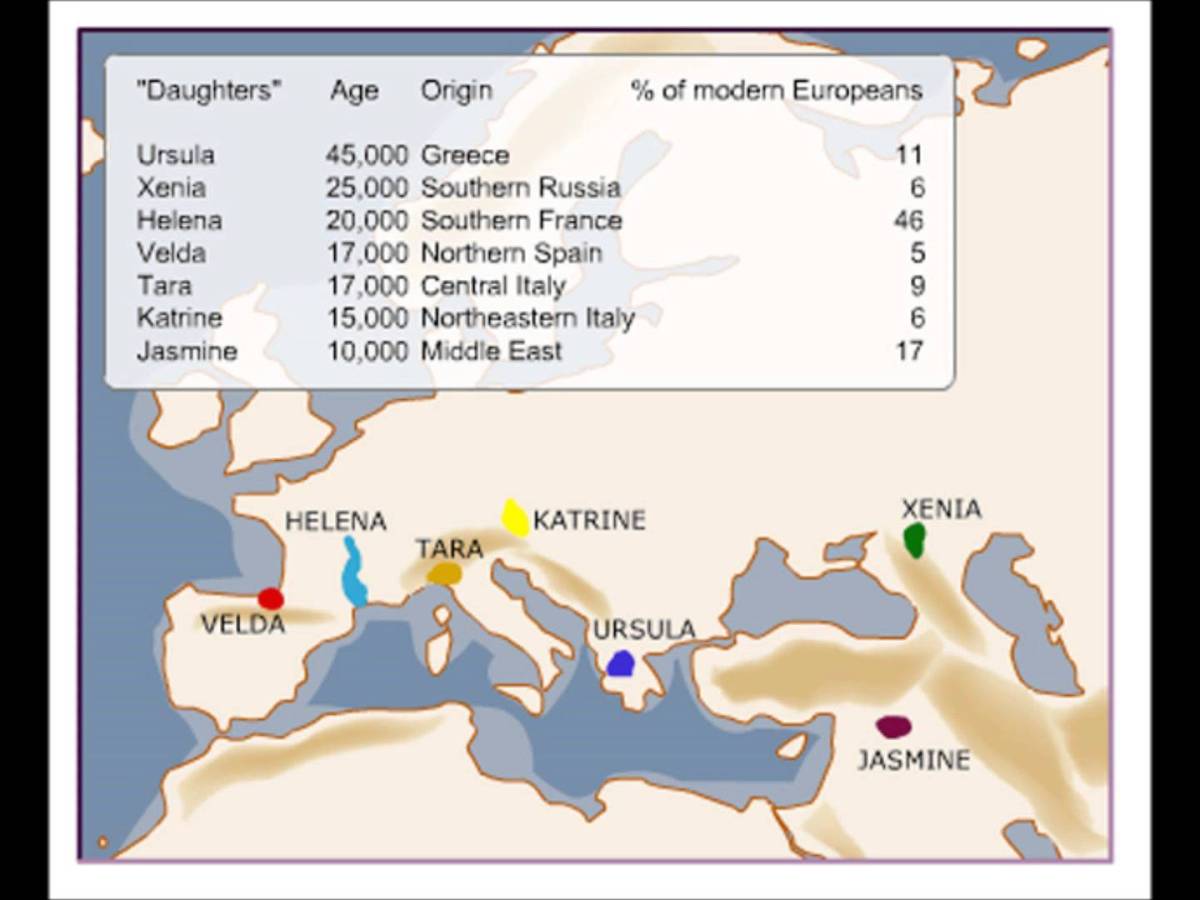Brain cells, blood cells (except red blood cells), skin cells, liver cells, and bone cells. Every cell has a set of instructions in the form of DNA.
The human body contains 50 trillion tiny cells, and almost all of them contain a complete set of instructions for making that person unique. If a person would think of DNA as a cookbook, then the genes are the recipes. These recipes tell the cells how to function and what traits to express (red hair vs. brown hair, blue eyes vs. green eyes). The four main ingredients in our DNA are A, (adenine) T, (thymine) G, ( guanine) and C (cytosine). A will always pair with T and G will pair with C. Using different combinations of these four ingredients creates different proteins, just as using different combinations of the same ingredients can make different meals.
Alterations in genes or chromosomes alter the protein produced and can hence cause disease. DNA is constantly subject to mutations or accidental changes in its code. A person can acquire mutations during their lifetime from environmental factors, including UV radiation, chemicals and viruses.
Silent mutations are not harmful; in fact some mutations are beneficial. Genetic mutations create diversity, which keeps the population healthy.
What makes us different?
DNA controls all of our traits. Those that are retained tend to be those that give us a benefit in our environment.
Most DNA tests rely on mitochondrial DNA to trace heritage as it is passed from mother to children. DNA tests rely on markers that are consistent from generation to generation. This is how we trace traits with DNA. We can determine the heritage by looking at those marker genes. For example people of Welsh descent have the same set of marker genes. When genes are combined during reproduction the marker genes from both are retained.
Dr. Robert Klepper Iowa Lakes Community College.
Humans have a total of 23 pairs of chromosomes for a total of 46 chromosomes. One of each pair is randomly inherited from each parent. Each person has 22 pairs of uniquely shaped chromosomes and one set that determines sex. A female has two X chromosomes and a male has a X & Y chromosome.
For genetic DNA testing for genealogy research, the two types of DNA most useful are the Y chromosome and the mitochondrial. The Y chromosome is passed from father to son while the mitochondrial is from mother to all children.
In most cases an infant will get two copies of a gene, one from the mother and one from the father. This transfer takes place at conception where they join to create a single cell. This cell will divide ultimately developing into a child. Parents contribute chromosomes randomly to each child, so each child receives a unique set of chromosomes. Some will resemble the mother and some the father. The chromosomes can also join into a unique combination. Genotype is the gene received for a given trait, while phenotype is what physical traits show in a child.
Traits or Nature vs. Nurture
Everyone has notable feature or quality – this is a trait. Traits are passed from generation to generation. Physical traits include height, weight, eye color and hair color.
Behavioral traits are also inherited, behavioral genetics is a branch of science that tries figure out what role the inherited factors play in how people act and react. Scientists are working to discover how much of people’s behavior is determined by the genes they inherit from their parents as well as how much is determined by their learning choices and living conditions.
Behavioral genetics are hard to study because scientists have to be able to separate the genetic factors from the environmental ones. Scientists have studied children that are adopted, but these cases are hard to find and often the results do not prove anything. Pinpointing whether genetic factors or environmental factors are the ones that most often influence a person can be difficult or impossible to measure.
The Seven Daughters Of Eve
The fact that we are all children of God has been genetically proven by Brian Sykes a British geneticist. In his studies he learned that 95% of Europe’s current population has just seven mtDNA (mitochondrial DNA) groups. These groups can be traced back in time to “Mitochondrial Eve” a woman who lived 140,000 years ago; all of us are direct maternal descendants.
Sykes gave fictional names to the seven daughter of Eve in order to make it easier to trace a person’s heritage. The names are U (Ursula), X (Xenia), H (Helena), V (Velda), T (Tara), K (Katrine), and J (Jasmine). He combined DNA and anthropology to explain roughly where and when each woman lived.


Conclusion
There are many good things that can come from learning about a persons DNA. But there are also some negative things. For instance what if a person had their DNA tested and it revealed that at a certain age a person would develop Huntington’s disease. Would this influence their life’s decisions?
There are also ethical issues, at this time DNA testing is optional. But many medical tests are becoming less and less optional as time goes by. So the question is who should make the decision about when genetic tests are done? As well as who should have access to the results. Would the results of these tests be covered under the HIPPA Laws?


